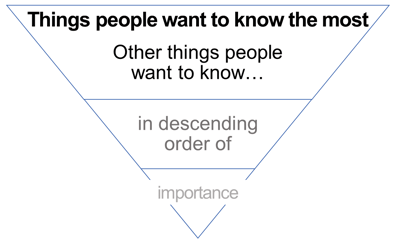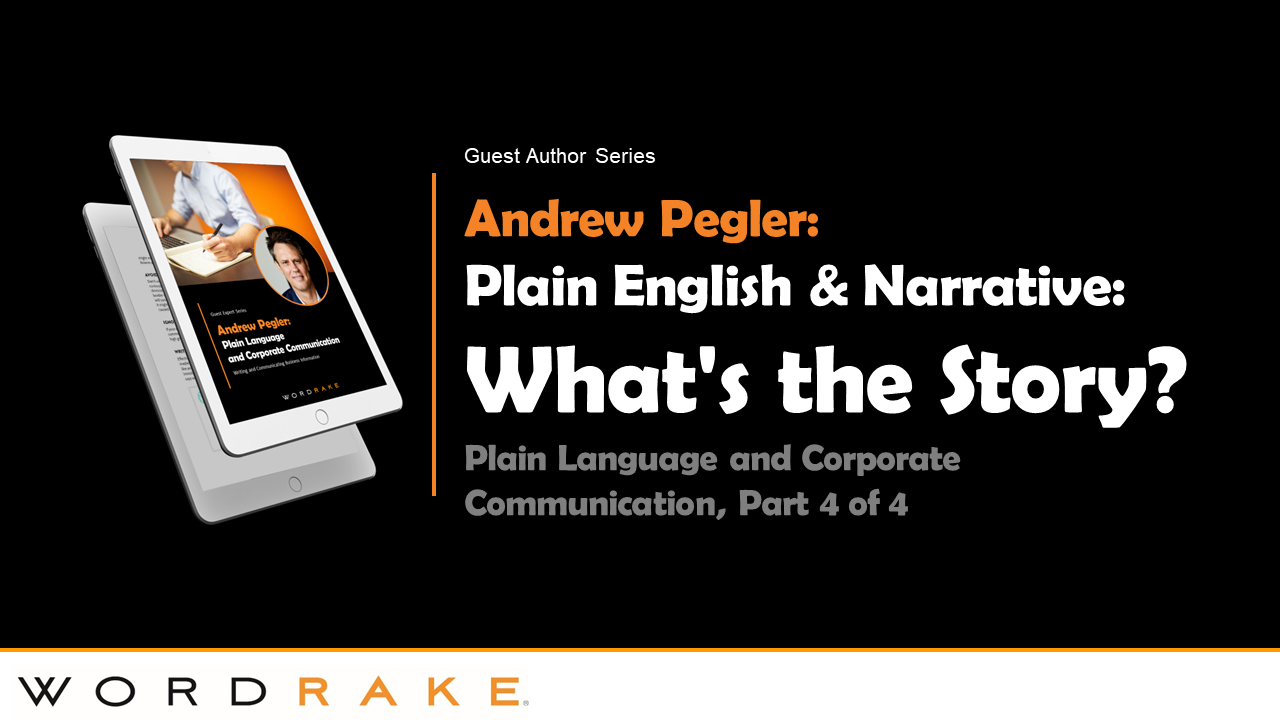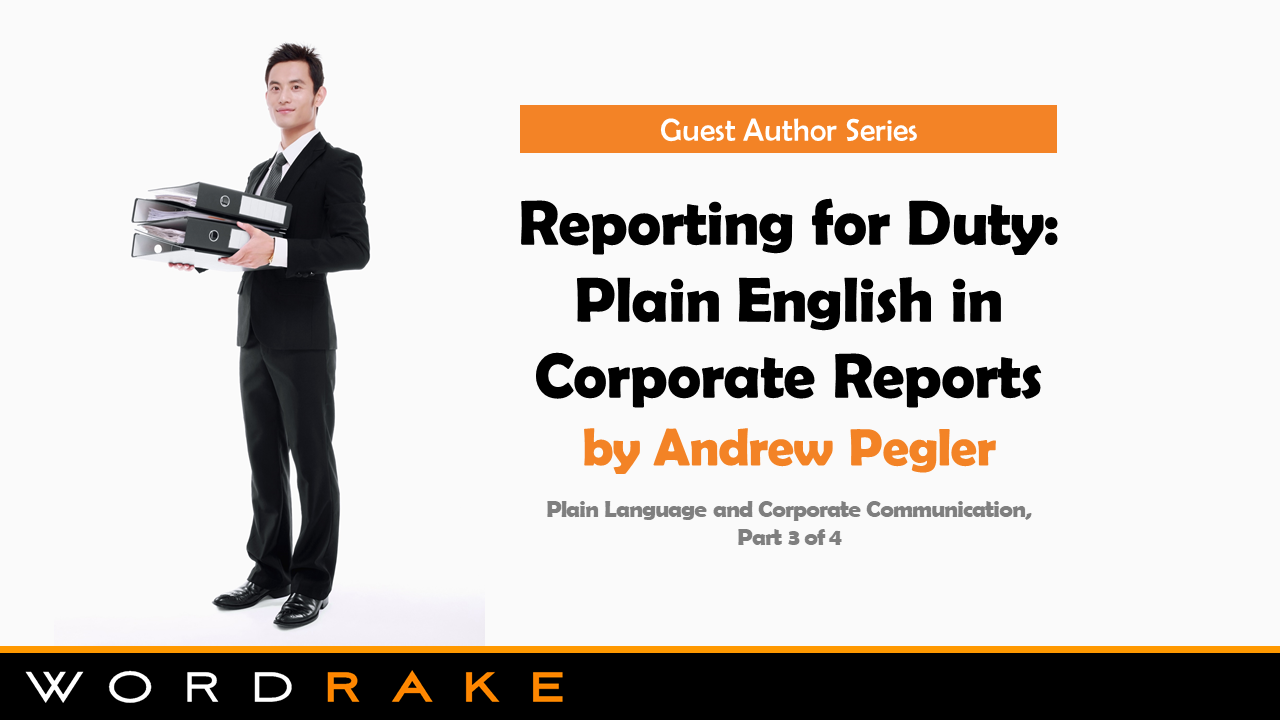I was in Boise, Idaho yesterday and you know how conservative that state can be and we went out for a walk to get a coffee and it was a cold day and within a quarter hour I must have seen 15 people with face piercings and green hair.
Confused? You’re not alone. The paragraph above is a mess. The language is straightforward, there aren’t any very long words, it’s written in the first person and it’s chatty. These are all hallmarks of writing in plain English, but… Did you understand it at first reading? Very unlikely. Apart from being badly punctuated, little thought has gone into how the information is presented. If ideas are jumbled and illogical, you’re in trouble.
Is the paragraph trying to convey that I think Idaho’s values are ‘too traditional’, or that I was surprised by the summer weather, or that I don’t like nose rings? Actually none of those. I’m trying to say that Idaho seemed quite liberal when I was there. Ideas are clearer when they’re organized:
I was in Idaho yesterday. I saw 15 people with face piercings and green hair. No one blinked an eye.
Plain English is the meat and potatoes of good communication but it’s not the same without the gravy—logic and structure. Simple vocabulary only gets you halfway. You achieve plain English when you have completed your research, compiled the information, worked out what you really need to say and thought about the simplest way to get your message across. Most people writing a report follow three steps: show the raw data, show the analysis, state the conclusion. But, there’s a better way—be intentional with how you tell your story.
Rethink the Order
When reading the news, you may have noticed that journalists start with an attention-getting headline, summarise (or misleadingly twist) a few main ideas into the first paragraph and then go on with the story. This is called the inverted pyramid. Inverting the pyramid means turning your ideas upside down and starting with the most important information. This structure helps users skim content and looks a bit like this…

The inverted pyramid is based on the fact that people pay more attention when they first see your content. Their interest tends to wane in the middle, and often they never reach the end.
Like a journalist, show the most important information first—don’t be afraid to start with your ‘answer’ or conclusion.
Use Headings as Guideposts
Headings should be expressed in your most perfect, plain English. But don’t depend on them to carry your message—they are designed for scanning and are generally not read carefully. Headings need to follow a consistent hierarchy and reflect relationships between the ideas in the pyramid.
Top level headings introduce content while sub-headings are more descriptive or analytic. Analytic headings should tell you exactly what you’ll be reading below. They can summarise mid-level recommendations that you then support with smaller facts, data, analysis, benchmarks, etc. Being literal is key.
Don't overdo headings. In general, avoid writing them as questions. A heading’s main purpose is to pithily sum up the next phase of ideas and inspire people to keep reading.
Use Plain English for a Clear Message
Plain English is clear, concise and understandable from the get-go. It’s easy to scan, gets to the point and doesn’t alienate with jargon. It helps managers save time—they won’t need to rewrite unclear copy. And clients will actually read your message! Logically ordered plain English—inverted pyramid style—could reduce your word count by at least 30% without loss of meaning or intent.
Imagine the Reader’s Perspective
The key here is empathy. If you were the reader, what would you want to know and how would you want the information presented? Keep that key principle in mind so you always deliver what your clients need—clear, easy-to-understand copy. Writers who do this can process and structure large amounts of information—conveying an interesting story, message or presentation without omitting important details.
Idaho surprised me…
About Andrew Pegler
Andrew Pegler is Principal of Andrew Pegler Media Ltd, an editorial and design agency specializing in keeping it simple. He is an award-winning plain English editor and writer and plain English workshop presenter. Andrew holds a bachelor’s degree in communications and in economics. He also holds certificates in accounting, tax law, finance proofreading, editing, and public speaking. He is a regular presenter on plain English at conferences and summits in Australia and abroad.
Series on Plain Language and Corporate Communication
This is the final piece in a series of four articles on plain language and corporate communication by award-winning writer and editor Andrew Pegler. To make your writing easier to digest, turn to WordRake editing software—it generates edit suggestions with a single click. WordRake helps you weed out jargon and unnecessary words, and suggests simpler phrasing that's easier for readers to understand. WordRake editing software is available for Microsoft Word and Outlook on Windows, or for Microsoft Word only on Mac. You can try it free for 7 days.




.png)




